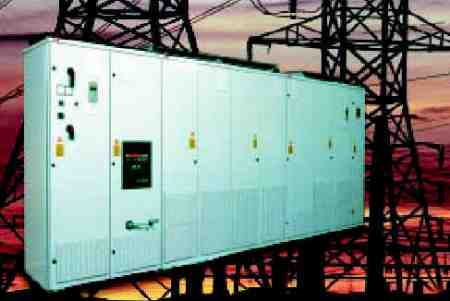Guide to Harmonics
with AC Variable Frequency Drives
 Contents
Contents
- Introduction
- Basics of the harmonics phenomena
- Harmonic distortion sources and effects
- Harmonic distortion calculation by using DriveSize software
- Circuit diagram for the calculation example
- Input data for motor load
- Motor selection
- Inverter selection
- Inverter supply unit data
- Network and Transformer data input
- Calculated harmonic current and voltage
- Calculated harmonic currents in graphical form
- Part of the printed report
- Standards for harmonic limits
- EN61800-3 (IEC1800-3) Adjustable speed electrical power drive systems
- IEC1000-2-2, Electromagnetic compatibility (EMC)
- IEC1000-2-4, Electromagnetic compatibility (EMC)
- IEC1000-3-2, Electromagnetic compatibility (EMC)
- IEC1000-3-4, Electromagnetic compatibility (EMC)
- IEEE519, IEEE Recommended practices and requirements for harmonic control in electrical power systems
- Evaluating harmonics
- How to reduce harmonics by structural modifications in the AC drive system
- Factors in the AC drive having an effect on harmonics
- Table: List of the different factors and their effects
- Using 6-pulse diode rectifier
- Using 12-pulse or 24-pulse diode rectifier
- Using phase controlled thyristor rectifier
- Using IGBT bridge
- Using larger DC or AC inductor
- Other methods for harmonics reduction
- Tuned single arm passive filter
- Tuned multiple arm passive filter
- External active filter
- Summary of harmonics attenuation
- 6-pulse rectifier without inductor
- 6-pulse rectifier with inductor
- 12-pulse rectifier with polygon transformer
- 12-pulse with double wound transformer
- 24-pulse rectifier
- Active IGBT rectifier
- Definitions
Introduction
General
This guide continues ABB’s technical guide series, describing harmonic distortion, its sources and effects, and also distortion calculation and evaluation. Special attention has been given to the methods for reducing harmonics with AC drives.
Basics of the harmonics phenomena
Harmonic currents and voltages are created by non-linear loads connected on the power distribution system. Harmonic distortion is a form of pollution in the electric plant that can cause problems if the sum of the harmonic currents increases above certain limits.
All power electronic converters used in different types of electronic systems can increase harmonic disturbances by injecting harmonic currents directly into the grid. Figure 2.1 shows how the current harmonics (ih) in the input current (is) of a power electronic converter affect the supply voltage (ut).

Figure 2.1 Plant with converter load, mains transformer and other loads.
The line current of a 3-phase, 6-pulse rectifier can be calculated from the direct output current by using the following formula.
 | , where |
| the total RMS current and |
| direct current output from the rectifier. (valid for ideal filtered DC current) |
The fundamental current is then
In a theoretical case where output current can be estimated as clean DC current, the harmonic current frequencies of a 6-pulse three phase rectifier are n times the fundamental frequency (50 or 60 Hz). The information given below is valid in the case when the line inductance is insignificant compared to the DC reactor inductance. The line current is then rectangular with 120° blocks. The order numbers n are calculated from the formula below:
| | where |
The rms values of the harmonic components are:
 |
and the harmonic components are as shown in Figure 2.2.

Figure 2.2 The harmonic content in a theoretical rectangular current of a 6-pulse rectifier.
The principle of how the harmonic components are added to the fundamental current is shown in Figure 2.3, where only the 5th harmonic is shown.

Figure 2.3 The total current as the sum of the fundamental and 5th harmonic.




 Contents
Contents